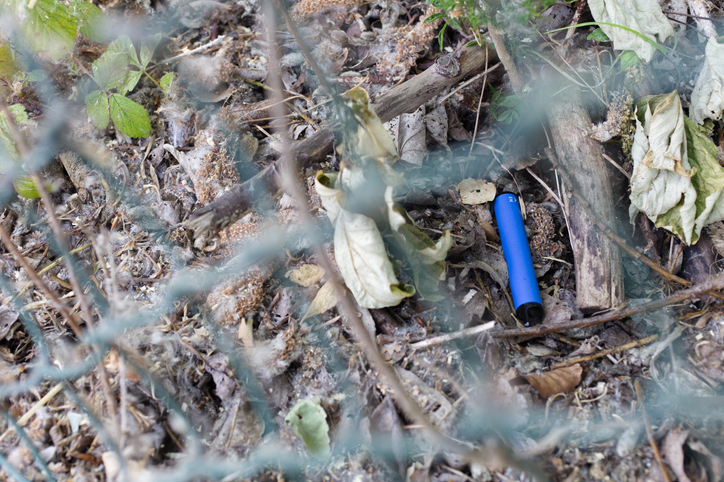Disposable vape batteries can be recharged hundreds of times: study
December 15, 2023

While the lithium-ion batteries in disposable vapes are discarded after a single use, they can continue to perform at high capacity for hundreds of cycles, according to new research from UCL and the University of Oxford.
The study, supported by The Faraday Institution and published in Joule, highlights a growing environmental threat from these increasingly popular vape pens, which are not designed to be recharged.
Disposable vapes have skyrocketed in popularity in the UK since 2021, with a survey finding an 18-fold increase recorded between January 2021 and April 2022. This has led to new waste problems, with about five million of the devices thrown away in the nation each week.
The research team had a hunch that the batteries used in disposable e-cigarettes were rechargeable, but were not aware of any previous studies that had assessed how long the lithium-ion batteries in these products are capable of lasting.
“Popularity in single-use vapes has exploded in recent years. Despite being sold as disposable, our research has shown that the lithium-ion batteries stored within them are capable of being charged and discharged over 450 times. This work highlights the huge waste of limited resources caused by disposable vapes,” said Hamish Reid, from UCL Chemical Engineering and the first author of the study.

To test their hunch, researchers at UCL and the University of Oxford harvested batteries from disposable vapes under controlled conditions, then assessed them using the same tools and techniques used to study batteries in electric vehicles and other devices.
They examined the batteries under microscopes and used X-ray tomography to map their internal structure and understand the constituent materials. By repeatedly charging and discharging the batteries, they determined how well the batteries maintained their electrochemical performance over time, finding that they could be recharged many hundreds of times in some cases.
Professor Paul Shearing, senior author of the paper from UCL Chemical Engineering and the University of Oxford, said: “The surprise for us were the results that pointed toward just how long these batteries could potentially cycle. If you use a low charge and discharge rate, you can see that for over 700 cycles, you still have more than 90 per cent capacity retention. That’s a pretty good battery, actually. And these are just being discarded. They’re being chucked on the side of the road.
“As a bare minimum, the public needs to be aware of the types of batteries going into these devices and the need to properly dispose of them. Manufacturers should provide the ecosystem for reuse and recycling of e-cigarette batteries, and also should be moving towards rechargeable devices as the default.”
Professor Shearing and his team are also researching new, more selective ways to recycle batteries that allow individual components to be recovered without cross-contamination, as well as more sustainable battery chemistries, including post-lithium ion, lithium sulfur, and sodium ion batteries.
In order to address challenges across the entire battery supply chain, scientists should consider batteries’ life cycles when thinking about any of their applications.
“That permeates all the work we do, really, whether it’s a vape battery or whether it’s a battery going into an electric helicopter,” said Professor Shearing. “It’s the same kind of thought process where we need to fully understand the life cycle of a battery device.”
